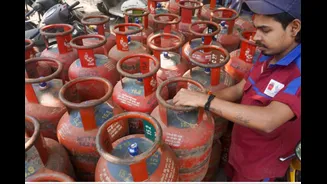October's Export Slump
In October, India's textile and apparel exports experienced a considerable decline. The Confederation of Indian Textile Industries (CITI) reported that
textile exports fell by 12.92% year-on-year, while apparel exports decreased by 12.88%. Cumulatively, textile and apparel exports saw a decrease of 12.91% compared to October 2024. This downturn encompassed almost all textile categories, including cotton yarn, fabric, made-ups, man-made fibres, jute products, carpets, and handicrafts, all of which experienced double-digit declines. During the period from April to October, Indian textile exports fell by 3.54% compared to the same period in FY25. Conversely, apparel exports showed a modest growth of 1.13% during the same timeframe. These figures highlight the widespread impact of the challenges facing the Indian textile sector.
US Tariffs' Impact
The primary catalyst for this export decline was the imposition of tariffs by the United States. The US implemented a 50% tariff on imports from India, which included a 25% reciprocal tariff and an additional 25% penalty for purchasing Russian oil. This move was particularly impactful because the US held the largest share, at 28%, of India's apparel and textile exports. The tariffs led to a ripple effect throughout the industry. Garment and textile exporters reported that US buyers began requesting steep discounts, canceling or postponing existing orders, and reducing order volumes. This chain of events significantly affected the financial performance of many businesses within the sector, forcing them to navigate a challenging economic landscape.
Government's Response
In response to the challenges posed by the US tariffs, the Indian government took several steps to support the domestic textile industry. One notable action was the removal of import duty on cotton. This measure was intended to alleviate some of the financial burden on the industry and assist businesses in managing the impact of the tariffs. Analysis by CITI showed that cotton imports in October were significantly higher than in the previous year, increasing by 83%. From April to October 2025, cumulative cotton imports rose by 50% year-on-year. This surge in imports was partly a consequence of the government's policy change, reflecting efforts to maintain competitiveness in the face of rising costs and tariffs.
Industry Survey Findings
CITI conducted a survey in October to gauge the severity of the impact of the tariffs on textile businesses. The survey revealed that approximately one-third of the respondents reported a reduction in their turnover of more than 50%. This statistic underscores the substantial financial distress experienced by many companies in the sector due to the tariffs and related trade disruptions. The survey data also helped in understanding the broader implications of the trade policies, allowing the industry and policymakers to comprehend the scope of challenges and formulate strategies to mitigate negative effects and stabilize the market.

















